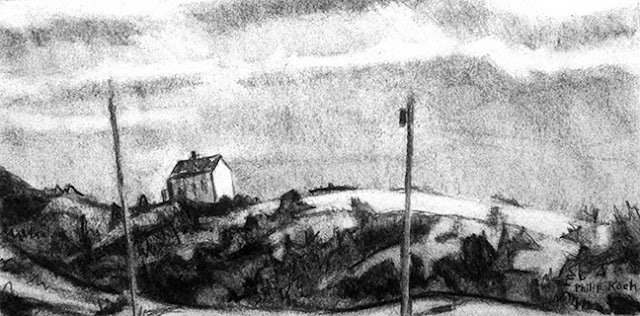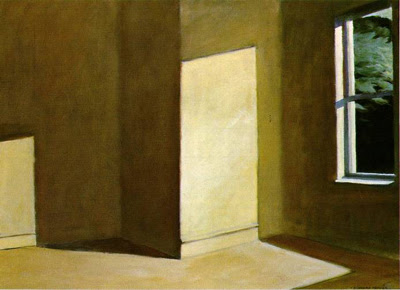What I Learned from My Ink Wash Drawings
Philip Koch, The Trees, sepia, 30 x 42", 1985
All of us are on a long journey. Who we are today is the product of sometimes amazingly contradictory influences. For an artist every medium they employ offers them a different lesson.
I was in my painting storage room organizing work for my upcoming solo exhibition at the Washington County Museum of Fine Arts (Nov. 8, 2014 - Feb. 22, 2015). I stumbled upon four of my large ink wash drawings, snugly resting in the painting racks. That was enough to spin me off into reminiscing how they played a decisive role in my growth as a painter.
A little history: When I first began painting I was attracted to the geometric abstractions of the 1960's and painted with big flat shapes of intense acrylic colors. As I reached grad school at Indiana University I unexpectedly fell in love with the University Art Museum's 19th century landscape paintings. They propelled me into a darkly moody world, with me painting in oil over canvases first covered in a deep umber brown. Here's my oil Fall at Lake Lemon, 16 x 20" from 1971 as an example. The hills and trees are mostly middle-toned to dark, with smaller light accents providing the contrasts. For much of the next decade this was my default method.
In the mid 1980's I started looking once again at the quick wash drawings Rembrandt used to make with sepia colored ink. I was struck by the beautiful overall lightness of his drawings. They seemed to be infused with a sun-filled mist. Here's a Rembrandt ink wash drawing from the 1650's.
I resolved it was time for me to try my hand at some large scale wash drawings.
Philip Koch, Daybreak II, sepia,, 28 x 42" 1985
Philip Koch, Down to the Bay, sepia, 22 x 44", 1986
What was so helpful to me in doing these works on paper was how it reoriented my thinking about what the overall tone of my oil paintings could and should be.
Philip Koch, Summer III, sepia, 31 x 41 1/2", 1985
The tonal habits I acquired by working in ink washes gradually transitioned in the '90's into another work on paper medium, vine charcoal. Like ink wash, it's unrivaled for its sense of light and shadow and for wrapping an image up in a blanket of atmosphere.
I focus so much on drawing as it's central to how I build my oil paintings. But it was my work in ink wash that opened my eyes to how to really use vine charcoal.
I focus so much on drawing as it's central to how I build my oil paintings. But it was my work in ink wash that opened my eyes to how to really use vine charcoal.
Philip Koch, Old Railway, Truro, vine charcoal, 9 x 12", 1998.









